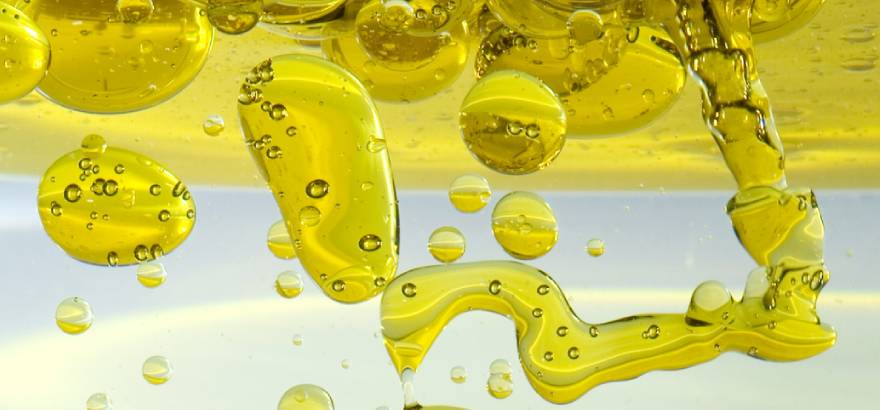fter a long time from my previous blog, I thought that in these rainy days, common problem is number of lubricants being mixed with water. Water is life, but a life destroyer in case of oil. Water or moisture enters in oil by different ways in different lubricants during operation. Few operations prone to develop moisture in oil where as in some cases water enters in oil accidentally. But in any of these circumstances, water is detrimental to any lubricant. Studies have shown that moisture in oil reduces life of a bearing by 10 to 100 times.
SOURCE OF WATER IN LUBRICANTS
- Condensation -Water can contaminate a system by condensation when moist air enters the component and a change in temperature causes the water to condense and drop into the oil. However, level of moisture by this means is too low(< 0.5%).
- Breathers – hot oil is prone to catch moisture from air through breathers. This type of cases occurs when there is high level of moisture in atmosphere(in monsoon season).
- Heat exchanger – cooling systems , heat exchangers to cool lubricant are major source of water in oil. Minor leakages allow cooling water to enter in oil.Such systems are common in hydraulic oils.
- Water jackets – some times whole lubricant sump has water jackets to cool oil (typically seen in quenching oils), leakages in such jackets are reason of water seepage in oil.
- Accidental reasons – water enters in oil while fighting fire in /around oil. while topping of oil in water jackets or tanks that cools oil.
- Miss-handling – we have seen that rainy water enters in big oil sumps due to carelessness of operators. In rare cases I have seen that while installing new tanks no body notices that there is some part of water in empty tank and fill it with fresh oil.
What is the real Harm?
Water in oil in any proportion is harmful to oil as well as machine. Water is poor lubricant and destroys oil film on moving parts and that increases wearing of such parts. In presence of water, oil gets oxidized very quickly while operating under high temperature and pressure. Water also attracts some of additives present in hydraulic oils that further degrades lubricants. Generally, oil prevents corrosion bearings and other parts of machine but water in oil does the exact opposite.
Three Forms of Water
- DISSOLVED WATER refers to water that has been chemically absorbed into the oil. While dissolved water possesses no direct threat to the component being lubricated, its presence can serve as a catalyst to oxidation. Dissolved water is normally not visible in the oil.
- EMULSIFIED WATER is water that maintains its chemical integrity, but is held in suspension in the oil by additives and contaminants. Emulsified water will severely alter the load handling ability of the oil. When temperature and pressure are applied to a contaminated fluid, the oxidation process is significantly accelerated, leading to premature degradation. Internal corrosion and rust will also result in all areas of the system. When the oil has emulsified water, it will take on a
hazy or milky appearance. - FREE WATER describes water that is present in the oil, but not held in suspension. Since oil and water don’t mix, the oil’s base stock will be constantly trying to separate from water. Without additives or contaminants to bond with the water, it will separate rapidly and settle to the bottom of the oil. Free water will be visible in the oil as a separate phase at the bottom of the oil reservoir.
TOLERANCE LIMIT OF WATER IN OIL
While different machine manufacturers set different tolerance limit of water in oil, most common limit is 500 ppm (0.05%). There systems for which the same limit is as low as 30 ppm mainly because of presence of some sensitive valves, sensors etc.
TEST TO KNOW MOISTURE LEVEL
Crackle test is most common test to know presence of moisture/water in oil. Though this test is very primary and not scientific as it doesn’t inform exact level of moisture, it is very simple to know if moisture is present in oil. In crackle test few drops of oil is put on hot plate. This sample will have bubbles or pops up if moisture is present in it. If crackle test is positive another test carried out with help of Karl Fischer to know exact amount of moisture/water in oil.
CONTROLLING WATER LEVEL
In systems which are prone to moisture, lubricant must have demulsifier in it. Turbine oil, vacuum oils must have such additives. Circulating systems prone to water influx, such as those found in rolling mills and power generation plants, can simply drain
the water from the reservoir to control contamination, provided the oil exhibits good
demulsibility. However, once water enters in to oil certain steps must be taken to remove it. Simple filtration systems, vacuum dehydration or centrifuge systems are effective way to remove water from oil.
Your remarks and suggestions are welcome by mail (ajit_guruji@yahoo.com) or in the comments. At the same time we can help you if you are facing such problem at your works.


